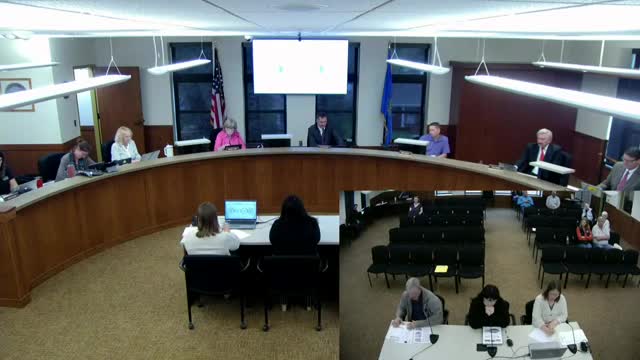Mead County agriculture data debate reveals discrepancies in economic impact assessment
May 14, 2024 | Meade County, South Dakota

This article was created by AI summarizing key points discussed. AI makes mistakes, so for full details and context, please refer to the video of the full meeting. Please report any errors so we can fix them. Report an error »

The Meade County Commission meeting on May 14, 2024, focused heavily on the economic impact of the agriculture industry in the county, sparking a heated discussion among commissioners regarding the accuracy of data presented in a recent economic report.
Commissioner Bob raised concerns about the report's claim that agriculture contributed only 3% to the county's gross product in 2022. He argued that this figure was misleading, citing data from the federal government's Census of Agriculture, which indicated that the total agricultural income was approximately $167 million, suggesting a much larger economic footprint than reported. Bob emphasized that agriculture should not be overlooked in planning and budgeting discussions, particularly regarding rural road funding, which he believes should reflect the industry's significance.
In response, Kaylee, a representative involved in compiling the report, explained that the data used was derived from a program called Lightcast, which aggregates various economic indicators. She acknowledged that while the agricultural census is a reliable source, it only provides specific agricultural data, and the report aimed to present a broader economic picture. Kaylee noted that the 2022 agricultural census data was released after the report was drafted, which limited their ability to incorporate the most recent figures.
The discussion highlighted a fundamental disagreement over the interpretation of economic data and its implications for county planning. Bob insisted that the agriculture sector's contribution was undervalued, while Kaylee defended the methodology used in the report, stating that government revenue figures significantly skewed the overall economic picture.
As the meeting progressed, it became clear that the commission would need to revisit the economic data and potentially amend the report to better reflect the agricultural sector's role in Meade County's economy. The outcome of this discussion could influence future budget allocations and planning efforts, particularly in relation to rural infrastructure and support for the farming community.
Commissioner Bob raised concerns about the report's claim that agriculture contributed only 3% to the county's gross product in 2022. He argued that this figure was misleading, citing data from the federal government's Census of Agriculture, which indicated that the total agricultural income was approximately $167 million, suggesting a much larger economic footprint than reported. Bob emphasized that agriculture should not be overlooked in planning and budgeting discussions, particularly regarding rural road funding, which he believes should reflect the industry's significance.
In response, Kaylee, a representative involved in compiling the report, explained that the data used was derived from a program called Lightcast, which aggregates various economic indicators. She acknowledged that while the agricultural census is a reliable source, it only provides specific agricultural data, and the report aimed to present a broader economic picture. Kaylee noted that the 2022 agricultural census data was released after the report was drafted, which limited their ability to incorporate the most recent figures.
The discussion highlighted a fundamental disagreement over the interpretation of economic data and its implications for county planning. Bob insisted that the agriculture sector's contribution was undervalued, while Kaylee defended the methodology used in the report, stating that government revenue figures significantly skewed the overall economic picture.
As the meeting progressed, it became clear that the commission would need to revisit the economic data and potentially amend the report to better reflect the agricultural sector's role in Meade County's economy. The outcome of this discussion could influence future budget allocations and planning efforts, particularly in relation to rural infrastructure and support for the farming community.
View full meeting
This article is based on a recent meeting—watch the full video and explore the complete transcript for deeper insights into the discussion.
View full meeting